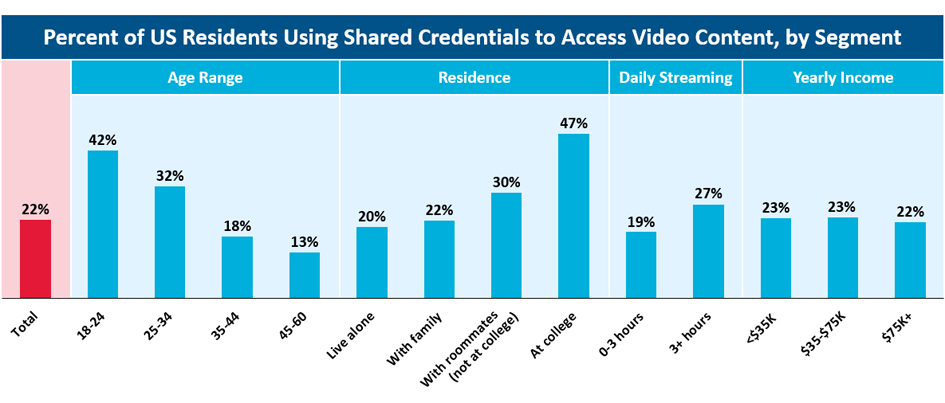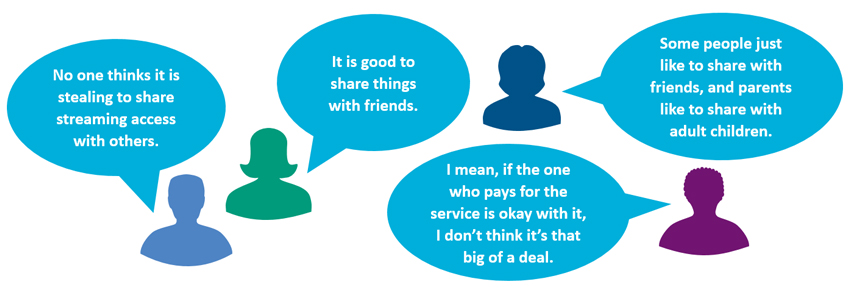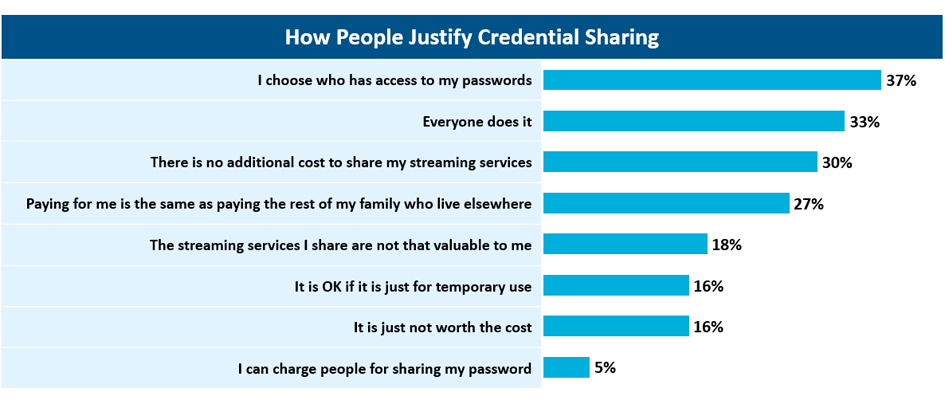Is It Too Late To End Video Streaming Credential Sharing?
Up until recently, the consumer habit of sharing account passwords to access video streaming services had been accepted and even advocated by leading service providers. It was also widely known as being most common among the college-age, 18-to-24-year-old, demographic. So rather than sharing being an issue, it became a marketing tactic to get these consumers using the video streaming service with the aim of converting them to buyers later.
Did it work?
No one can doubt the meteoric rise of video streaming over the last several years. However, with it, so has the casual acceptance of sharing passwords and account credentials – and this is the growing threat to video providers’ business models.

Source: The Threat of Credential Sharing & Theft
Going back to the demographic of heavy password sharers: the 18-to-24-year-olds. Today, many of those college kids would have aged into the buying demographic: the 25-to-34-year-olds. Yet, credential sharing remains remarkably high in this cohort where, in our recent study, 32% admit to it. Imagine having a third of users of your service not paying; it is also nearly double or more than older age groups. If the expectation was that these consumers were supposed to become paying subscribers by now, why haven’t they?
Perhaps, it’s the cost.
Price sensitivity is often the assumed reason. When asked, however, price and value responses are not the dominant reasons consumers give for sharing. In our study, 56% of sharers say they would pay to access the streaming service if the credentials they used no longer worked. Sharers carry on using borrowed credentials because it is simply just too easy.
What about the ethical issues?
This is where it gets tricky. For one, password sharing was an unpunished practice for many years. And now, sharers consider it socially acceptable. In our study, when asked why they share their credentials, sharers answered:

However, it is younger generations who are more likely to treat sharing account access as socially acceptable. Older age groups (35+ years old) share passwords much less with different views on the ethics and level of comfort on the security risk. These viewers had also already integrated television into their lives by paying for it and so it was normal to carry on with paying for streaming services.
It is the recent generation of viewers who have grown up with access to loads of free online content, the advent of the sharing economy, and the ability to watch top-quality video content online without paying for it. Did the marketing tactic inadvertently help normalize password sharing behavior in the new generation of viewers?

Source: The Threat of Credential Sharing & Theft
Today, the 18-24-year-old age group is still the cohort that makes up a large portion of sharers with 42% admitting to sharing passwords. As the current cohorts of heavy sharers age, the danger is they may continue the practice and so make it ubiquitous through all age cohorts over time.
There are worrying implications for video service providers:
- The potential subscriber pool is increasingly getting smaller than estimated when factoring in subscribers who are willing to pay
- Actual operating costs per paid subscriber are higher because of the added strains of providing services to those who don’t pay
- Content metrics are distorted by non-paying users
Does this mean that Pandora’s box is opened, and video streaming providers are doomed to lose ever higher percentages of revenue to illicit password sharing?
What service providers can do about video streaming credential sharing
There is another way forward if video streaming providers act quickly. Providers need to convert sharers into buyers or find ways to monetize their viewing.
Analytics and machine learning create ways into identifying, understanding, and creating these solutions.
Providers can use these tools to effectively identify specific accounts that show misuse of account credentials and then deploy highly targeted tactics. For example, providers can deliver personalized offers to upgrade high usage accounts into premium packages, or they can apply targeted restrictions to a small subset of accounts that are clearly engaged in widespread credentials abuse.
Testing and scaling these types of tactics are extremely effective ways to find an appropriate balance that converts credential sharing behavior into incremental revenue without jeopardizing the customer experience.
So, rather than overtly reducing or preventing credential sharing, video providers must continue to innovate their subscription service offering to make it not only worth using but one worth owning. Platform-wide restrictive policies can create lower customer satisfaction and increase churn. Instead, there is no shortage of ways to adjust the offering to entice buyers, add value, and create loyal customers.
Curious about how unauthorized credential sharing might be affecting your business? Read this case study to see what a communications services provider did to understand the extent and impact of illegitimate account sharing. Get in touch to find out how we can help.




